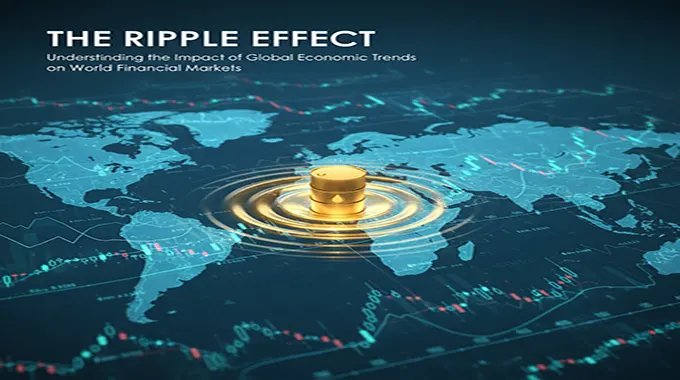Global financial markets are profoundly interconnected, meaning that economic shifts and policy decisions in one major region can send ripple effects across the globe. From shifts in monetary policy to geopolitical tensions and evolving trade dynamics, the global economy provides the backdrop against which all financial market activity is judged. Understanding these trends is crucial for investors, businesses, and policymakers navigating the complex world of finance.
1. Monetary Policy: The Interest Rate Conductor
Decisions made by major central banks, particularly the U.S. Federal Reserve (Fed), are arguably the most potent factor influencing world financial markets.
- Interest Rates and Capital Flows: When the Fed raises interest rates, it typically makes U.S. assets (like Treasury bonds) more attractive, leading to a stronger U.S. dollar and drawing capital away from other countries, especially Emerging Markets (EMs). This capital flight can trigger currency depreciation and increase borrowing costs for businesses and governments in those economies, causing stress on their financial markets.
- Inflation Expectations: Central bank policies aimed at controlling inflation directly affect investor sentiment. High, persistent inflation often prompts tighter monetary policy, which can depress stock valuations and bond prices as the discount rate for future cash flows rises. Conversely, expectations of lower inflation may allow for more accommodative policies, potentially boosting asset prices.
2. Geopolitics and Policy Uncertainty: The Risk Premium
Geopolitical conflicts, trade disputes, and sudden policy shifts introduce significant uncertainty, which financial markets fundamentally dislike.
- Trade Wars and Tariffs: Disputes, such as the renewed U.S.-China trade tensions, disrupt global supply chains and affect the earnings of multinational corporations. This often leads to increased volatility in the equity market and can impact sectors heavily reliant on international trade, like technology and manufacturing.
- Safe-Haven Demand: During periods of heightened geopolitical risk (e.g., wars or international sanctions), investors typically flock to safe-haven assets, driving up the prices of gold, certain government bonds (like U.S. Treasuries), and traditionally stable currencies like the U.S. dollar or Japanese yen.
- Commodity Price Spikes: Geopolitical conflicts frequently disrupt the supply of key commodities, most notably energy and food. The Russia-Ukraine conflict, for instance, caused massive spikes in oil and natural gas prices, which fueled global inflation and severely impacted the cost of living and production worldwide, leading to instability across financial markets.
3. Structural Trends: Long-Term Market Reconfiguration
Beyond cyclical changes, long-term structural economic trends are permanently reshaping financial markets:
- Deglobalization and Reshoring: An increasing trend toward protectionism and supply chain resilience (often called “deglobalization”) is leading to trade fragmentation. This can reduce economic efficiency, potentially putting upward pressure on long-term inflation and increasing macro-financial volatility.
- Technological Transformation: The rise of Artificial Intelligence (AI) and other technologies is fundamentally changing industries. This creates opportunities, driving high valuations in key tech sectors (like the “Magnificent Seven” in the U.S.), but also carries risks of overvaluation, similar to historical bubbles. Technology also transforms the mechanics of finance itself through Fintech and algorithmic trading.
- Climate Change and Decarbonization: The transition to a greener economy requires massive capital reallocation. Climate-related risks, such as extreme weather events, are increasingly being priced into asset valuations for vulnerable sectors (e.g., insurance, agriculture, and real estate), while the growth in green bonds and sustainable finance introduces new investment asset classes.
Navigating the New Normal
The prevailing sentiment among global financial leaders is that “uncertainty is the new normal.” High debt levels, interconnected financial systems, and elevated asset valuations in certain sectors make the global system vulnerable to shocks. The intricate dance between powerful global economic trends—monetary policy shifts, geopolitical crises, and structural reconfiguration—determines the trajectory of world financial markets. In this volatile environment, prudent risk management, international policy cooperation, and a dynamic understanding of these global forces are essential for maintaining financial stability and sustainable growth.













